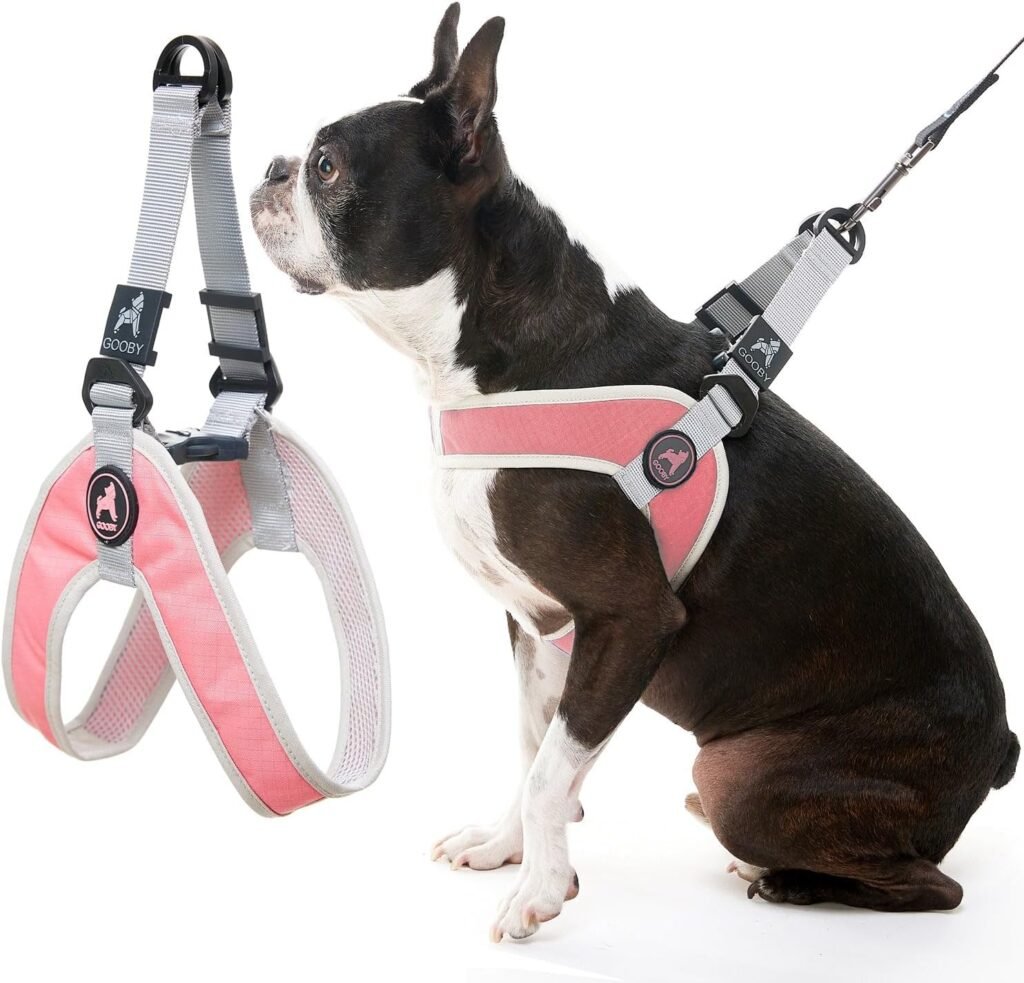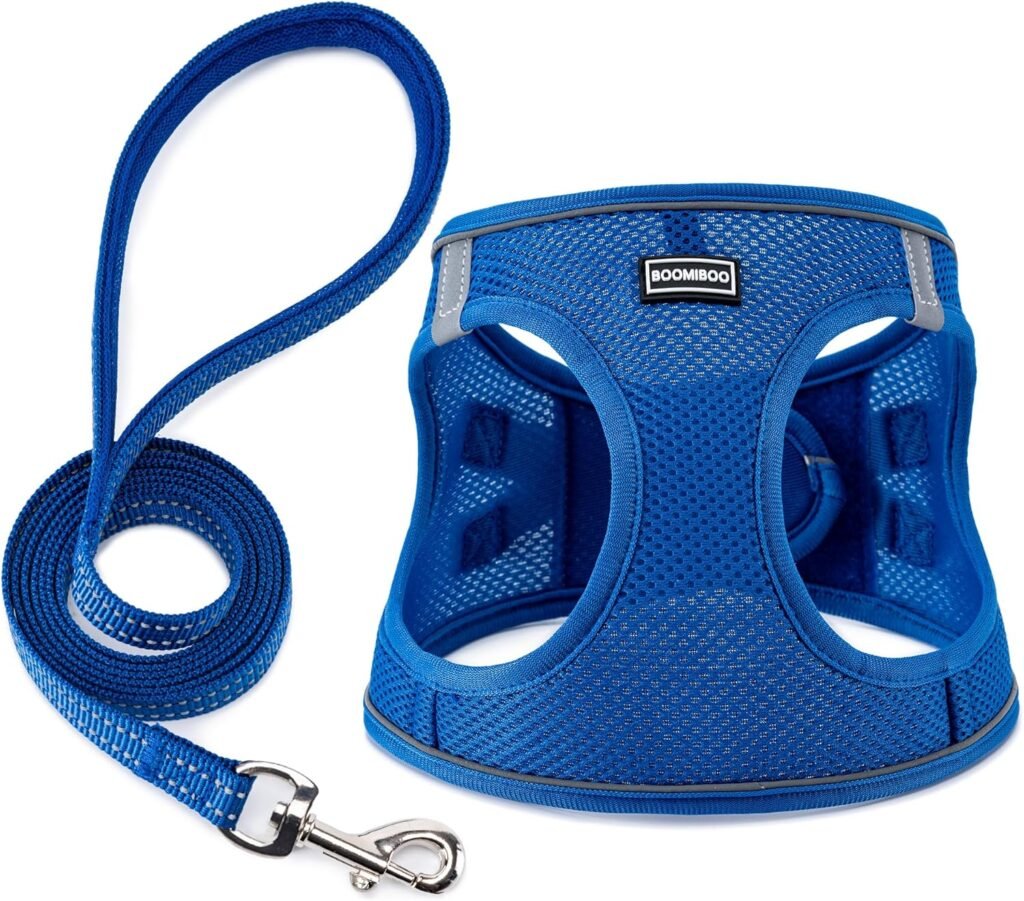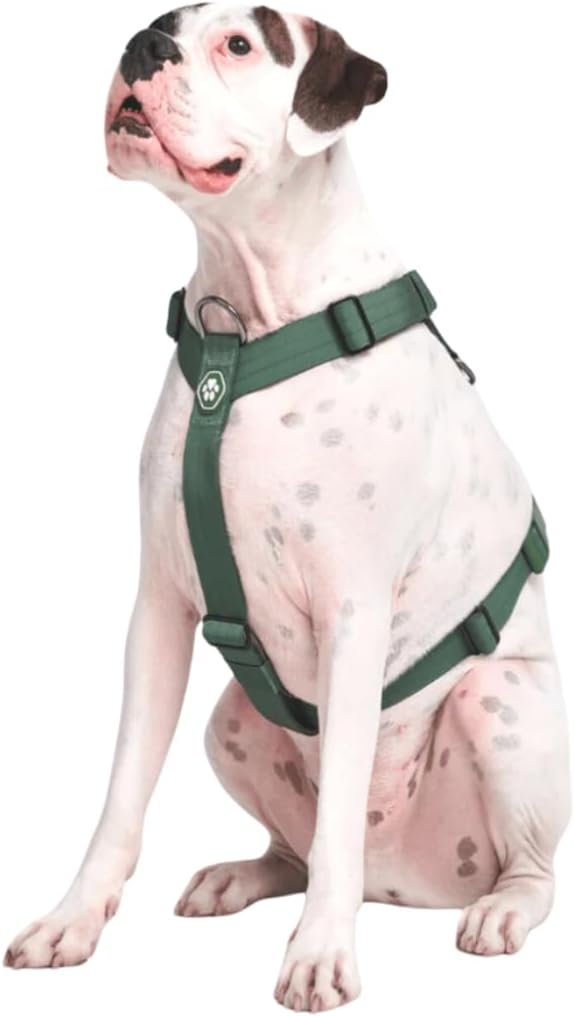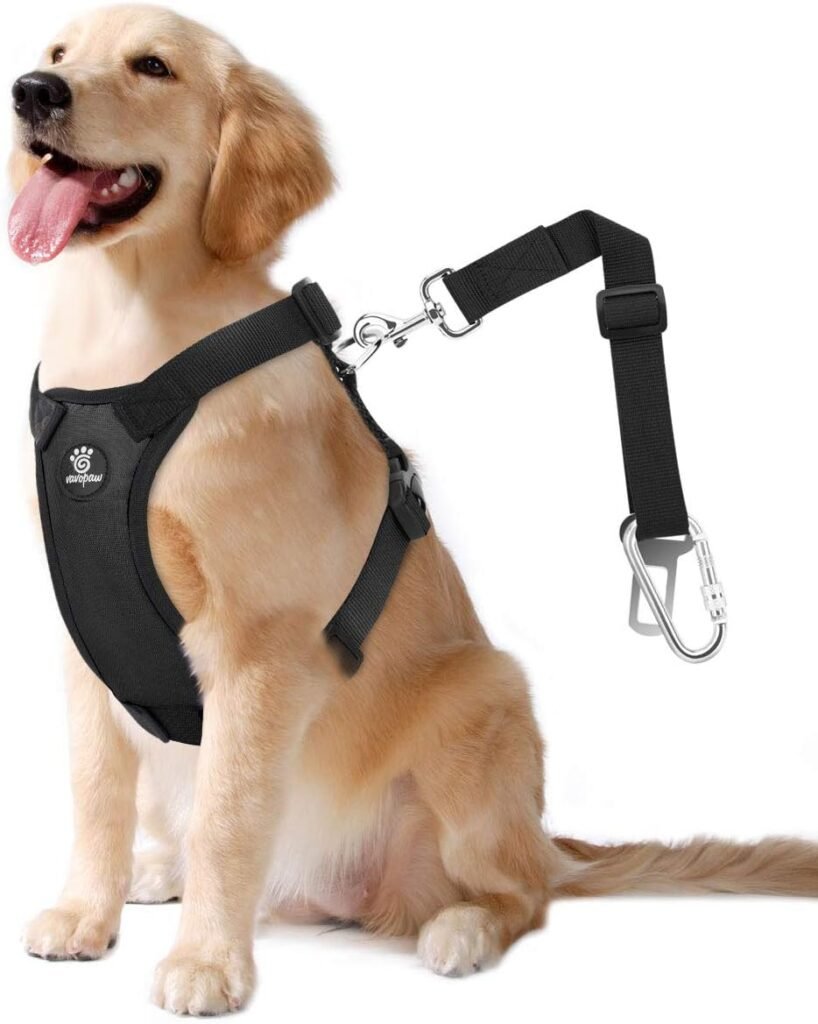Walking your dog around Columbus, Ohio—from the picturesque Scioto Mile to the vibrant Short North—should be a joyful experience for both you and your furry companion. A key element to making those walks safe, comfortable, and stress-free is the right dog harness. Unlike collars, harnesses distribute pressure evenly across your dog’s body, helping prevent injury and offering better control.
But with so many types available, how do you pick the right one? Let’s break it down.
Understanding Different Types of Dog Harnesses
Back-Clip Harness
The back-clip harness is a staple for many dog owners. With the leash attachment point located between the shoulder blades, it’s a simple and reliable option—especially for dogs who already walk nicely on a leash.

Pros:
- Easy to put on
- Comfortable for most dogs
- Best for small to medium breeds
Cons:
- Ineffective for dogs that tend to pull
Front-Clip Harness
If you have a dog that loves to lead the charge, a front-clip harness could be a game changer. By attaching the leash at the chest, it redirects your dog’s momentum, encouraging them to walk by your side.

Pros:
- Helps reduce pulling
- Offers more direct control
Cons:
- The leash can sometimes get tangled underfoot
- Not ideal for off-leash play
Dual-Clip Harness
For maximum flexibility, the dual-clip harness offers both front and back leash attachment points. This is an excellent choice for training sessions or adapting to different walking environments.

Pros:
- Highly versatile
- Suitable for both training and casual walks
Cons:
- Typically more expensive
Step-In Harness
Perfect for pups who aren’t fond of gear going over their heads, the step-in harness lays flat on the ground for an easy fit. Your dog simply steps in, and you buckle it up.

Pros:
- Quick and straightforward
- Comfortable for most dogs
Cons:
- Can be tricky to size for very small or large breeds
Vest Harness
Designed like a snug little jacket, vest harnesses provide extra padding and security. They’re especially popular for smaller breeds and can feature handy extras like reflective strips for nighttime visibility.

Pros:
- Super comfortable and secure
- Often comes with added features
Cons:
- May be too warm in hot weather
- Restrictive for larger dogs
No-Pull Harness
Built specifically to address pulling behaviors, no-pull harnesses often feature front-clip attachments and additional support elements to discourage lunging or straining.

Pros:
- Highly effective for strong pullers
- Provides enhanced control
Cons:
- Needs to be fitted properly to avoid discomfort
Car Safety Harness
For those who love taking their dogs along on road trips, a car safety harness is a must. Crash-tested and sturdy, they keep your pet secure in the vehicle and can double as a walking harness.

Pros:
- Great for travel safety
- Multifunctional use
Cons:
- Bulkier than standard harnesses
Tactical Harness
Built tough for adventure dogs, tactical harnesses are made from heavy-duty materials and often include MOLLE systems to attach gear. These are ideal for hiking, camping, or working dogs.
Pros:
- Extremely durable
- Perfect for outdoor excursions
Cons:
- Too heavy-duty for casual walks
Head Halter
While not technically a harness, a head halter fits around the dog’s muzzle and provides unparalleled control. It’s particularly useful for strong or reactive dogs, as it guides their entire head.

Pros:
- Excellent for controlling strong pullers
- Reduces leash strain
Cons:
- Takes time for dogs to adjust
- Must be used carefully to avoid discomfort
Escape-Proof Harness
Some dogs are true escape artists. Escape-proof harnesses feature extra straps and adjustment points to keep even the trickiest pups securely leashed.
Pros:
- Highly secure
- Perfect for anxious or wriggly dogs
Cons:
- More complicated to put on and adjust
How to Choose the Right Harness
Choosing the perfect harness depends on a few key factors:
- Size and Breed: Always match the harness size to your dog’s body type and weight.
- Behavioral Needs: If your dog pulls, lunges, or tries to escape, select a harness designed to address those habits.
- Comfort and Fit: A good harness should be snug but not tight. You should be able to slide two fingers under any strap.
- Material and Durability: If your walks are more rugged or your dog is particularly energetic, opt for sturdy materials.
Fitting Your Dog’s Harness Correctly
Proper fit is crucial. Begin by adjusting the straps until the harness sits snugly around your dog’s chest and torso, without pinching or hanging loose. Signs of a poor fit include chafing, loss of fur, or your dog slipping out of the harness entirely.
A correctly fitted harness keeps your dog comfortable and your walks enjoyable, whether you’re tackling a bustling city sidewalk or a quiet trail.
Ready to Hit the Streets of Columbus?
With the right harness securely in place, you and your dog are ready to explore all the amazing dog-friendly spots Columbus has to offer. A well-fitted, thoughtfully chosen harness transforms every outing into a safer, happier adventure—for both you and your four-legged friend.
So grab that leash, double-check those straps, and get ready to create some unforgettable memories!
Would you also like me to suggest a catchy title or a short social media caption you could pair with it?


